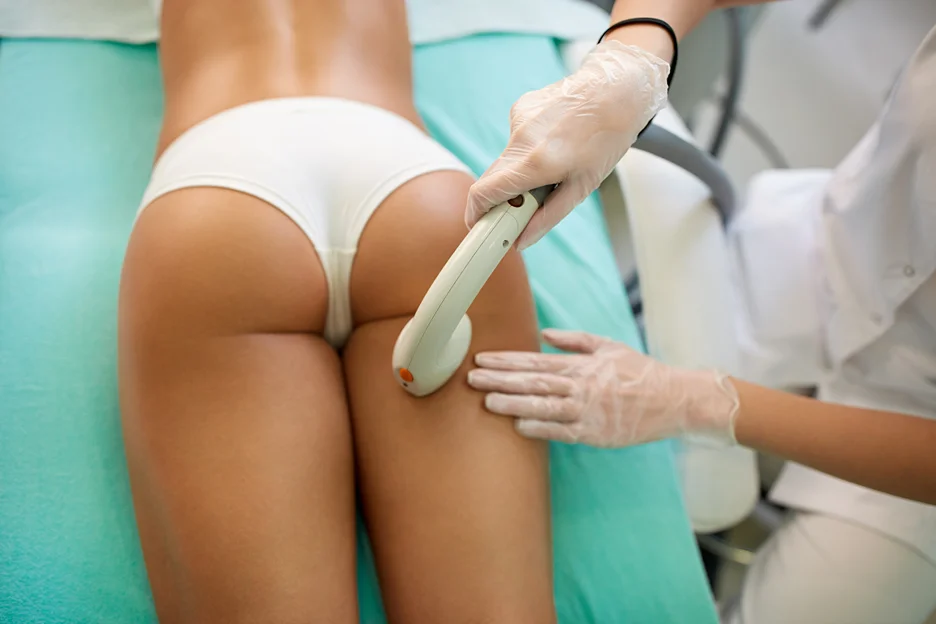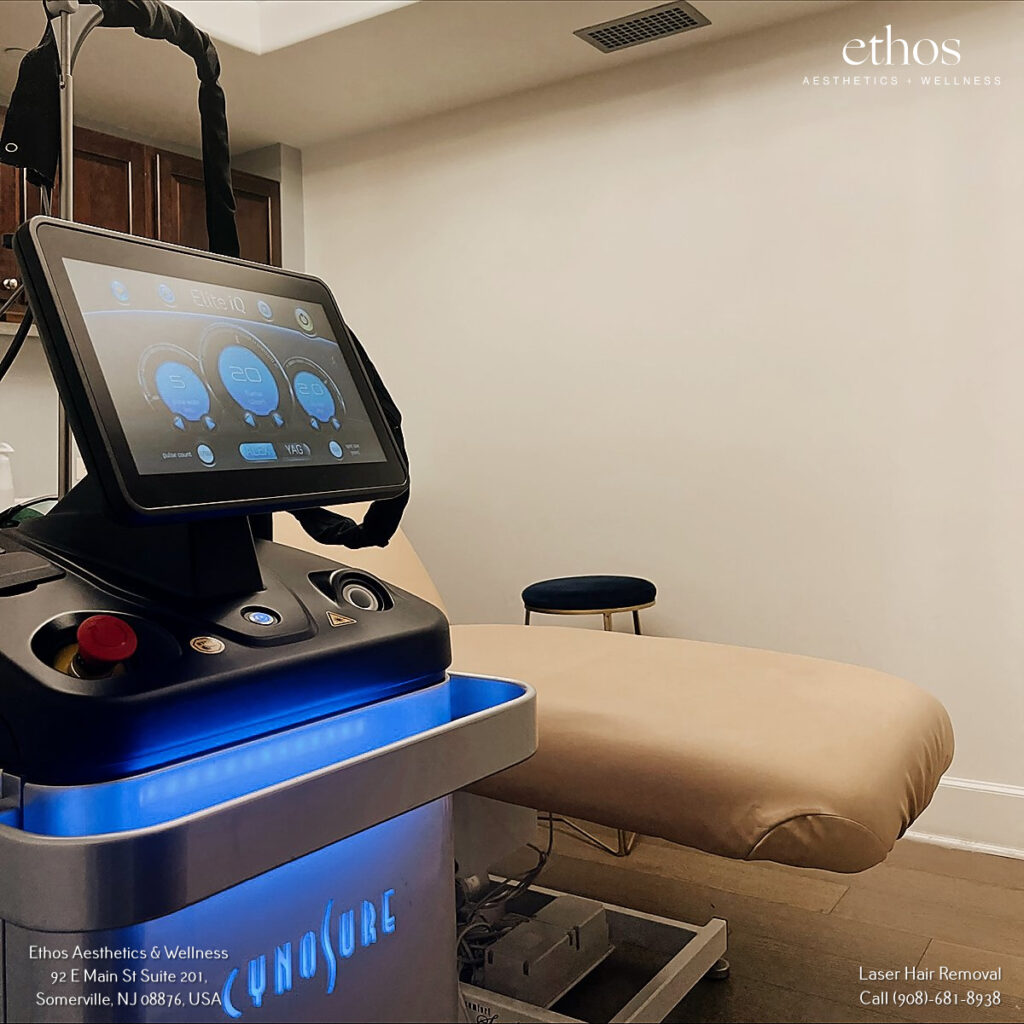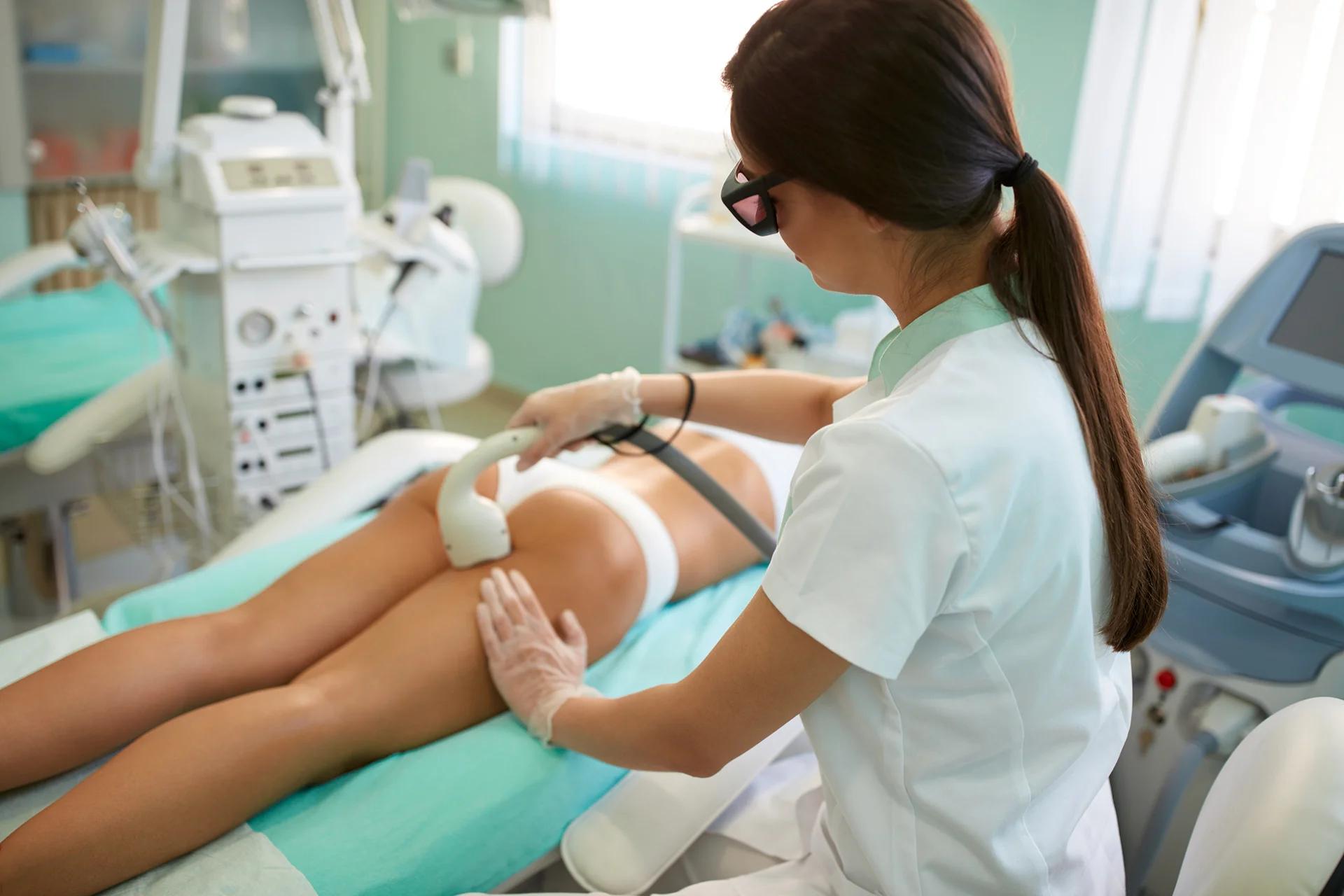You’ve likely stumbled upon this blog because you’re searching for more information on pilonidal cysts and laser hair removal treatment.
Pilonidal cysts can be painful and frustrating to deal with, but at Ethos Spa we specialize in using laser hair removal to prevent pilonidal cysts from recurring. Read on to learn everything you need to know about pilonidal cyst causes, laser hair removal procedures, expected results, and more!
What is a Pilonidal Cyst?

A pilonidal cyst is an abnormal pocket or sac that develops in the crease of the buttocks near the tailbone. These cysts are thought to form when dead skin cells, hair, and debris collect in the folds of the skin of the buttock cleft. The collection of material blocks the pores of the skin, causing an abnormal growth to develop that fills with fluid or pus.
Pilonidal cysts cause symptoms like:
- Pain and tenderness over the cyst
- Throbbing, swelling, and redness
- Drainage of fluid or blood
- Infection and fever
Without treatment, pilonidal cysts tend to recur and can interfere with daily activities.
What is Pilonidal Cyst Laser Removal?
Laser hair removal is a fast, effective treatment option to prevent recurrent pilonidal cysts. A laser precisely targets the hair follicles in the cleft between the buttocks, disabling hair growth in the area. Since ingrown hairs and loose hair are often what trigger pilonidal cyst development, removing the hair prevents that material from collecting and clogging pores.
Can a Pilonidal Cyst be Treated with Laser Hair Removal?
Yes, studies show laser hair removal reduces the rate of pilonidal cyst recurrence compared to other treatments. By preventing ingrown hairs, laser removes a primary cause of cysts developing.
How Laser Hair Removal Works
Laser hair removal uses highly concentrated pulses of light to target melanin pigment in the hair follicles under the skin. The light energy gets absorbed by the pigment, heating up the follicle and damaging it so it can no longer grow hair. The surrounding skin remains unaffected.
The Laser Removal Process
| Step | Description |
| 1 | Patient lies face down on table |
| 2 | Technician cleans and trims area |
| 3 | Laser handpiece delivers gentle pulses |
| 4 | Soothing gel applied after |
| 5 | Treatments every 4-6 weeks |
| 6 | Typically 6-8 sessions needed |
Benefits of Laser Hair Removal for Cysts
- Precisely targets hair follicles, not surrounding skin
- Minimal side effects like temporary redness
- Fast, easy, minimal downtime
- Prevents recurrent cysts by disabling hair growth
- Clinically proven effective in studies
Laser VS Other Hair Removal Options
Laser hair removal has distinct advantages over other options:
- Shaving: Only offers temporary reduction in hair growth
- Waxing/Plucking: Can impact how laser interacts with hair follicles
- Creams: Risk irritating sensitive skin around cysts
Laser provides lasting hair removal and recurrence prevention!
Other Questions You Might Have About Laser Hair Removal For Pilonidal Cyst
Is it Safe to have Laser Hair Removal After Pilonidal Surgery?
Yes, it is perfectly safe to undergo laser hair removal after pilonidal cyst surgery. The laser only affects the hair follicles under the skin, not the surface level healing incisions. The treatments will not disrupt the closure of surgical wounds.
Just be sure incisions have fully closed without drainage or openings first. Wait at least 3 weeks after surgery to allow proper healing.
What is the CPT Code for Laser Hair Removal for Pilonidal Cyst?
The standard CPT code your provider should use for laser hair removal treatment of a pilonidal cyst is 17999. This code is defined as:
“Unlisted procedure, skin, mucous membrane and subcutaneous tissue.”
17999 is used for laser procedures like hair removal that have a specific benefit for an underlying medical condition, such as reducing pilonidal cyst recurrence. Using this CPT code indicates laser hair removal is medically necessary due to your history of cysts.
Will Insurance Cover Laser Hair Removal for Pilonidal Cyst?
Coverage for laser hair removal for pilonidal cysts varies between individual health insurance plans. But using the proper 17999 CPT code gives the best chance for insurance reimbursement.
Some factors that improve the likelihood of coverage include:
- Documented history of recurrent pilonidal cysts despite other treatments
- Laser prescribed by your surgeon or dermatologist
- Clinical research provided to show laser reduces future cyst recurrence
- CPT 17999 code billed indicating medical necessity
- Treatments performed by an experienced laser clinic familiar with cyst protocols
We advise checking with both your health insurance provider and your doctor prior to beginning laser treatment to clarify expected coverage.
Where Can I Find Laser Hair Removal for Pilonidal Cyst Near Me?

If you’re looking for laser hair removal specialists in your local area, Ethos Spa offers this advanced treatment at all our locations in New Jersey.
Finding an experienced provider is key for safe, effective laser hair removal to prevent pilonidal cyst recurrence.
Schedule a consultation at your nearest Ethos Spa clinic to meet with a technician and discuss your pilonidal cyst concerns. We’ll customize an appropriate laser hair removal plan for your situation. Contact us today to get started with this proven approach to stop recurrent cysts.







